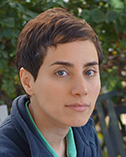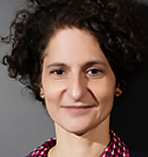Mirzakhani-prize-mathematics.jpg

To get awards news straight to your inbox, make sure to sign up for our Connect with Awards newsletter.
About the Maryam Mirzakhani Prize in Mathematics
 The Mirzakhani Prize (formerly the NAS Award in Mathematics) was established in 1988 by the American Mathematical Society in honor of its centennial. The prize was renamed to honor the late Maryam Mirzakhani (1977-2017), a highly accomplished and talented mathematician, professor at Stanford University, and member of the U.S. National Academy of Sciences. She was the first woman to win the Fields Medal, the most prestigious award in mathematics, often equated in stature with the Nobel Prize. Made possible through generous gifts from the Simons Foundation and other benefactors, this $20,000 prize will be awarded biennially for exceptional contributions to the mathematical sciences by a mid-career mathematician.
The Mirzakhani Prize (formerly the NAS Award in Mathematics) was established in 1988 by the American Mathematical Society in honor of its centennial. The prize was renamed to honor the late Maryam Mirzakhani (1977-2017), a highly accomplished and talented mathematician, professor at Stanford University, and member of the U.S. National Academy of Sciences. She was the first woman to win the Fields Medal, the most prestigious award in mathematics, often equated in stature with the Nobel Prize. Made possible through generous gifts from the Simons Foundation and other benefactors, this $20,000 prize will be awarded biennially for exceptional contributions to the mathematical sciences by a mid-career mathematician.
Most Recent Recipient
 |
Sylvia Serfaty, Courant Institute of Mathematical Sciences, New York University, will receive the 2024 Maryam Mirzakhani Prize in Mathematics.
Serfaty has made impactful contributions to the study of nonlinear partial differential equations, variational problems, and statistical physics problems.
Read more about Serfaty's work»
Recipients:
Sylvia Serfaty (2024)
For outstanding contributions to nonlinear partial differential equations and statistical physics.
Read more about Serfaty's work»
Camillo De Lellis (2022)
For his fundamental contributions to the study of dissipative solutions to the incompressible Euler equations and to the regularity theory of minimal surfaces.
Read more about De Lellis' work»
Watch De Lellis' acceptance speech»
Larry Guth (2020)
For developing surprising, original, and deep connections between geometry, analysis, topology, and combinatorics, which have led to the solution of, or major advances on, many outstanding problems in these fields.
Read more about Guth's work»
Watch Guth's acceptance speech»
Michael J. Hopkins (2012)
For his leading role in the development of homotopy theory, which has both reinvigorated algebraic topology as a central field in mathematics and led to the resolution of the Kervaire invariant problem for framed manifolds.
Clifford H. Taubes (2008)
For groundbreaking work relating to Seiberg-Witten and Gromov-Witten invariants of symplectic 4-manifolds, and his proof of Weinstein conjecture for all contact 3-manifolds.
Dan-Virgil Voiculescu (2004)
For the theory of free probability, in particular, using random matrices and a new concept of entropy to solve several hitherto intractable problems in von Neumann algebras.
Ingrid Daubechies (2000)
For fundamental discoveries on wavelets and wavelet expansions and for her role in making wavelet methods a practical basic tool of applied mathematics.
Andrew J. Wiles (1996)
For his proof of Fermat's Last Theorem by discovering a beautiful strategy to establish a major portion of the Shimura-Taniyama conjecture, and for his courage and technical power in bringing his idea to completion.
Robert MacPherson (1992)
For his role in the introduction and application of radically new approaches to the topology of singular spaces, including characteristics classes, intersection homology, perverse sheaves, and stratified Morse theory.
Robert P. Langlands (1988)
For his extraordinary vision, which has brought the theory of group representations into a revolutionary new relationship with the theory of automorphic forms and number theory.

